 Hero XPulse 210 Colours Explained: Auto Expo 2025
Hero XPulse 210 Colours Explained: Auto Expo 2025
 Auto Expo 2025: Top 10 Highlights From Bharat Mobility Global Expo 2025
Auto Expo 2025: Top 10 Highlights From Bharat Mobility Global Expo 2025

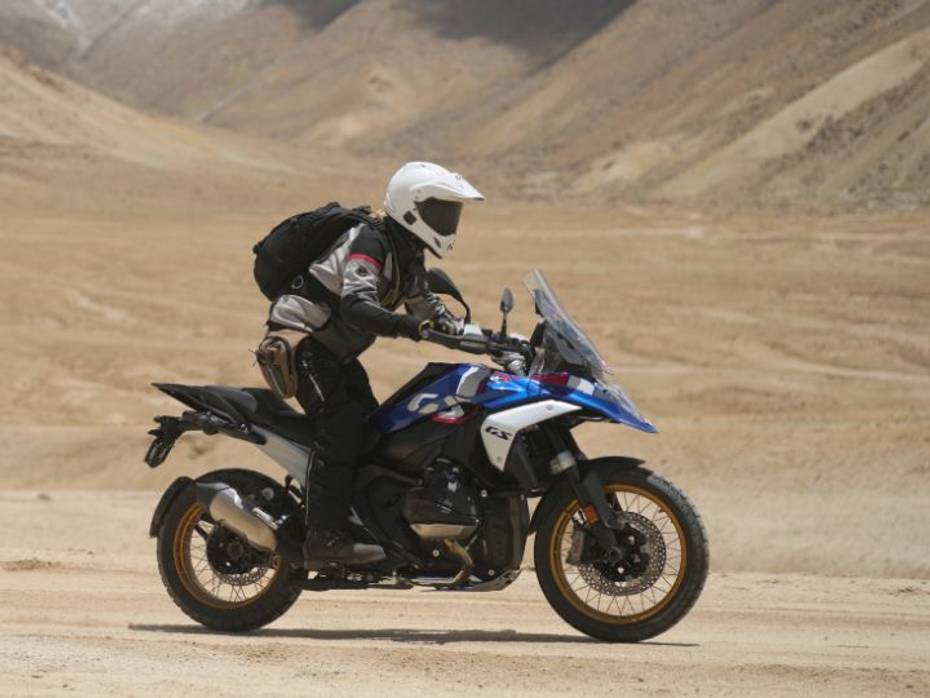
When it comes to the big daddy of adventure motorcycles, there has been one name that has stood the test of time - the BMW GS. For the last three decades, the GS has dominated the big adventure bike market. In fact, it’s been the highest-selling big bike in the world for quite a few years.
And this new R 1300 GS is not merely an update. BMW has almost started from scratch and made a new GS that’s got an improved engine, improved chassis, improved suspension, and improved electronics - simply put, it’s new and better in every way. So the real question is whether all these changes have made the R 1300 GS easier to ride than its predecessor. We had a short spin on this new GS on the winding mountain roads of Ladakh to find out the same.
The R 1300 GS’ design is actually completely different from that of the bike it replaces, the R 1250 GS. But at a quick glance, you can see the familiarity in the silhouette. The biggest design change that most people will talk about is the headlight design.

Gone is the asymmetric headlight layout, replaced by a single LED unit with a cross-shape DRL design. Some people might prefer the earlier asymmetric design, but this new ‘face’ is actually quite striking in the flesh. Now we can’t vouch for how good these headlights are in the dark, since we only rode the bike in the day. But the headlights 2 LED modules in the centre can have up to 47 matrix-style LEDs, which also function as Adaptive Cornering Lights.
Aside from the headlights, the proportions of this new 1300’s have been trimmed down, and it has a much slimmer profile now, which makes the bike look more athletic and sporty. Plus it looks absolutely smashing in this blue, white & red colourway, which BMW calls GS Trophy. The other four colour options for India are Plain White, Triple Black 1, Triple Black 2 and Option 719.
While BMW has maintained the GS’s traditional boxer engine layout, the engine capacity has gone up from 1250 to 1300cc. This 8-valve boxer motor makes more power and torque than before - 145PS @ 7750rpm and 149Nm @ 6500rpm. And since the motor still has BMW’s ShiftCam variable valve control, the engine, you get a quick response, whether you’re at low rpm or high.
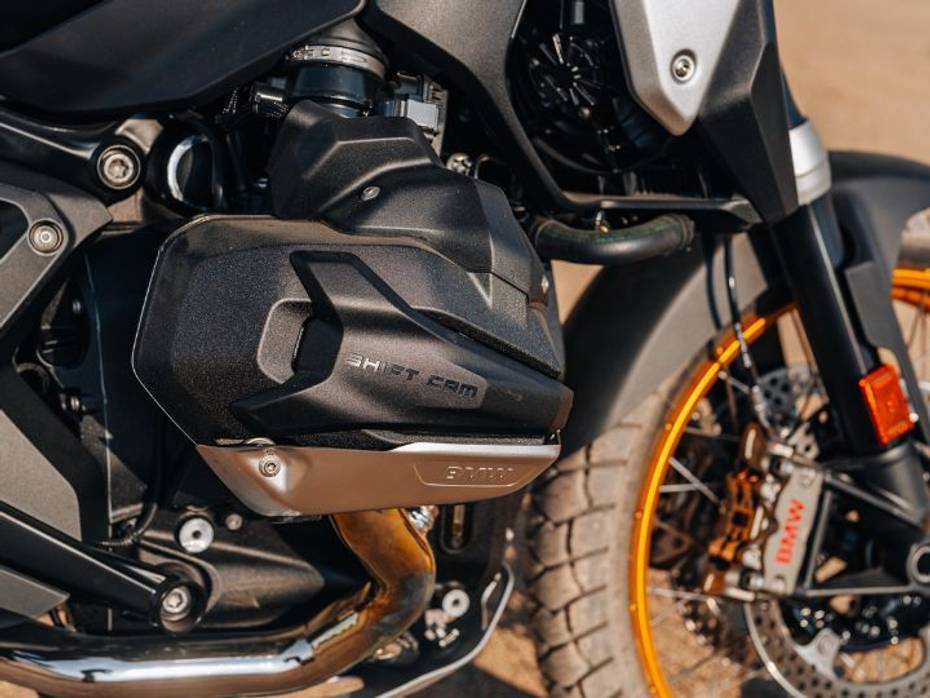
Now the R 1300 GS’ power figure might be far from class-leading - a certain Italian adventure bike makes a lot more, but the 149Nm of torque on tap is absolutely the highest for any adventure motorcycle. So as soon as you open the throttle, the GS is just rearing to go.
That said, we did find that the bottom-end response felt a bit weak, but that could also be down to the fact that we were riding high up in the mountains at an altitude of approximately 11-12,000 feet above mean sea level. And the rarified air at these altitudes does tend to sap all internal combustion engines of some of their performance.
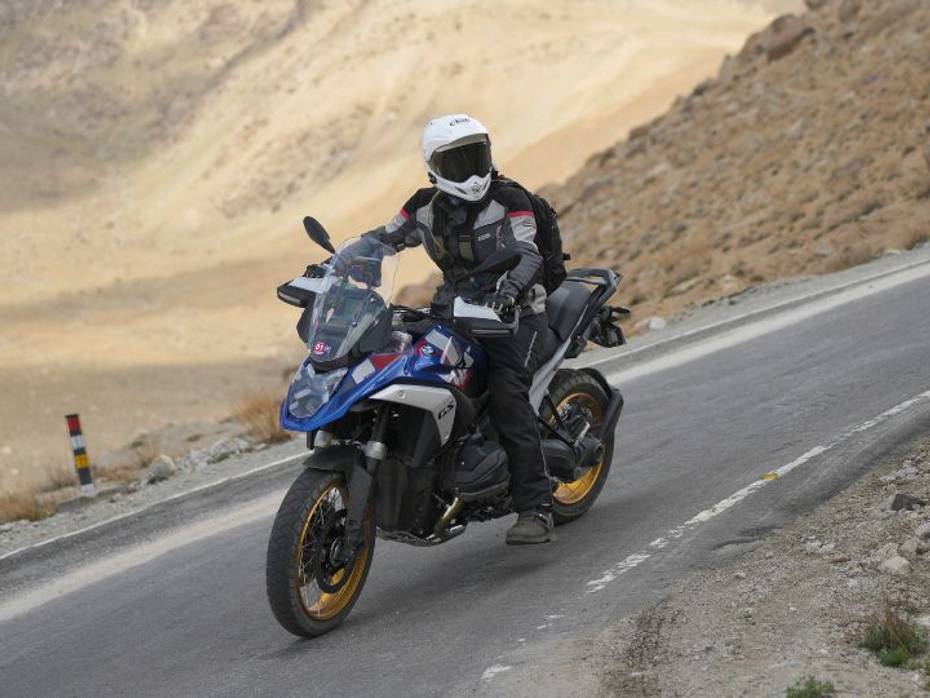
Apart from the increase in performance, this boxer engine is now more compact than before and BMW has reworked the valve train to ensure that both cylinders are exactly in line with each other. That means that one of your legs won’t get hotter than the other while riding. And on top of that, the gearbox has been moved from under the engine to behind it. Not only has all the work on the engine saved some 6kg in weight, but all that engine mass is now more centralised and sits lower down, which has had a massive positive impact on the handling.
The R 1300 GS now gets a brand new sheet metal backbone chassis and cast aluminium subframe. This has helped the 1300 shed 12kg over the 1250, bringing its kerb weight to 237kg. But more importantly, this new frame has made the bike narrower, so sitting on the bike and getting your feet down has become comparatively easier.

BMW still uses their Telelever front and Paralever rear suspension on this new GS. But with their new EVO updates, these have become even better. Now explaining exactly how this complicated suspension works will require a complete story of its own. But in short, the front end now feels more direct while steering and the back end is now more stable as well.
Because the GS’ mass is more centralized and lowered the bike feels much more nimble now. Of course, it's not as sharp as a sport bike or a sport naked. You can still feel the GS’ 237kg of kerb weight when you’re at a standstill or at a crawling pace, but once you get going that weight just disappears. Even on the narrow winding roads of Ladakh, the GS felt absolutely at home - it's just become a very easy bike to ride.
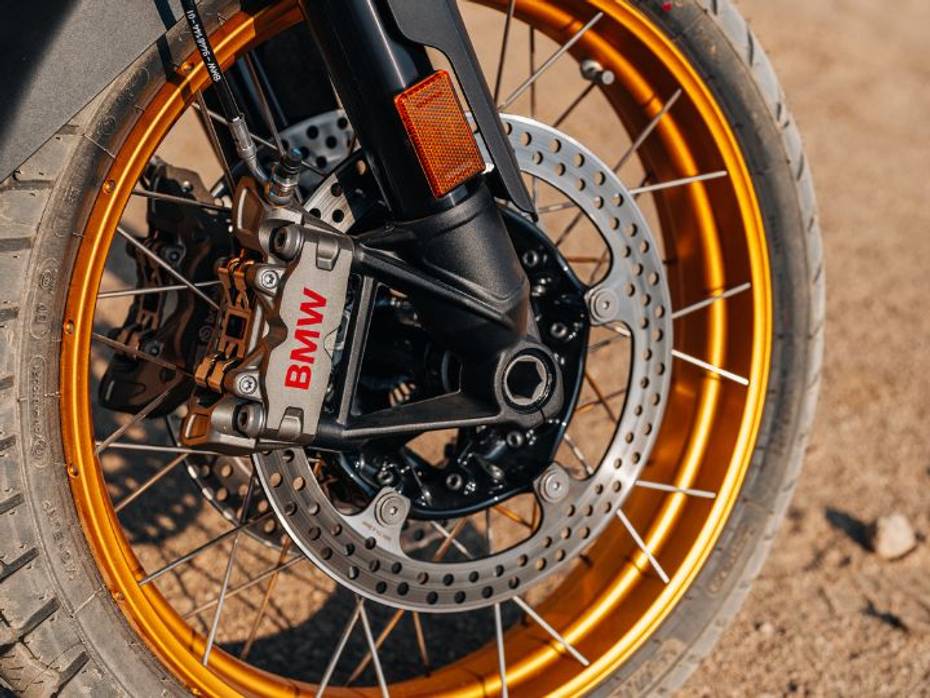
Then of course you have the brakes - twin 310mm discs at the front and a single 285mm disc at the rear. These too have seen a massive improvement and they’re just phenomenal now. The GS sheds speed with the utmost ease and stability even when you slam hard on the brakes. The lean-sensitive ABS does a great job of giving you a sense of control when braking on loose surfaces. BMW also has their own version of linked brakes on this GS.
So when you apply the front brake it applies the rear a little and vice versa. Now that brake bias depends on what riding mode you're in, how the traction is and many other factors. But the bike does it very smartly and works like a charm every single time. Honestly, even if you haven’t ridden too many big ADVs before, this R 1300 GS feels very welcoming.
The other big thing for the GS is its Dynamic Suspension Adjustment. This is a fully active suspension system that not only changes the damping rate based on the road surface but also changes the spring rate to match that damping rate. This means that the GS should handle any terrain with absolute ease. And while it works beautifully on large bumps, on small road undulations, the suspension doesn’t seem to settle down easily and keeps bobbing ever so slightly.
At 850mm, the R1300GS’ seat height is not exactly low. And if that’s a concern, one of the variants of the new GS coming to India (Triple Black 2) will get the option of Adaptive Ride Height. This lowers the suspension to bring the seat height to 820mm when riding under 30kmph.
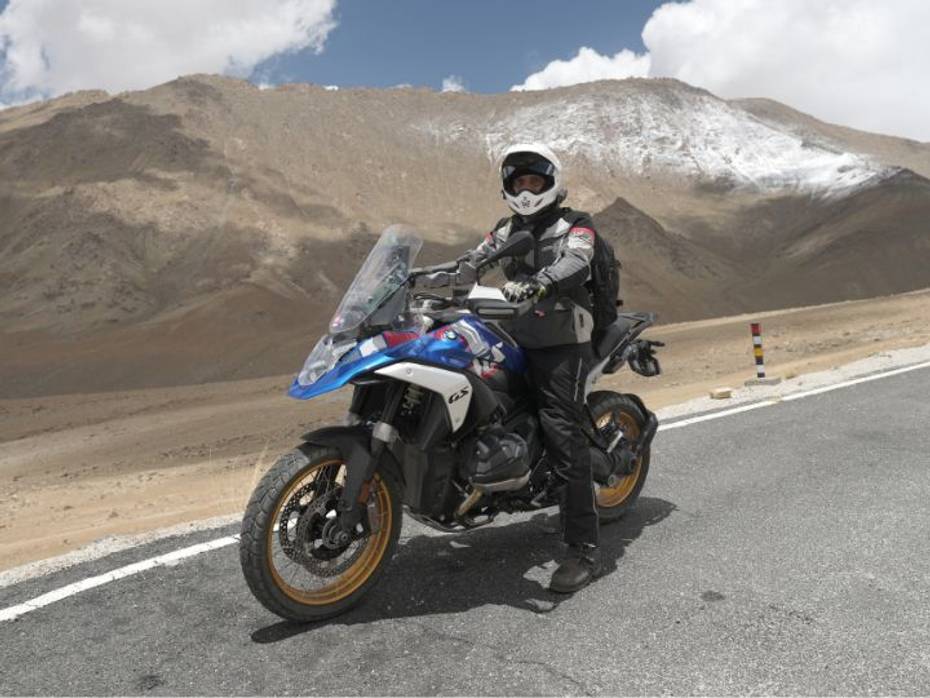
Once you get on the bike though, this big ADV is super comfortable. The seat is super spacious and the riding position is upright. Riding for long hours seems absolutely natural and if you want to tour across the country, you can do it on the GS in absolute luxury. Even when you’re tackling some off-road terrain, the standing-up posture is super comfortable, and the narrow nature of the bike makes it very easy to grip with your knees when you’re standing.
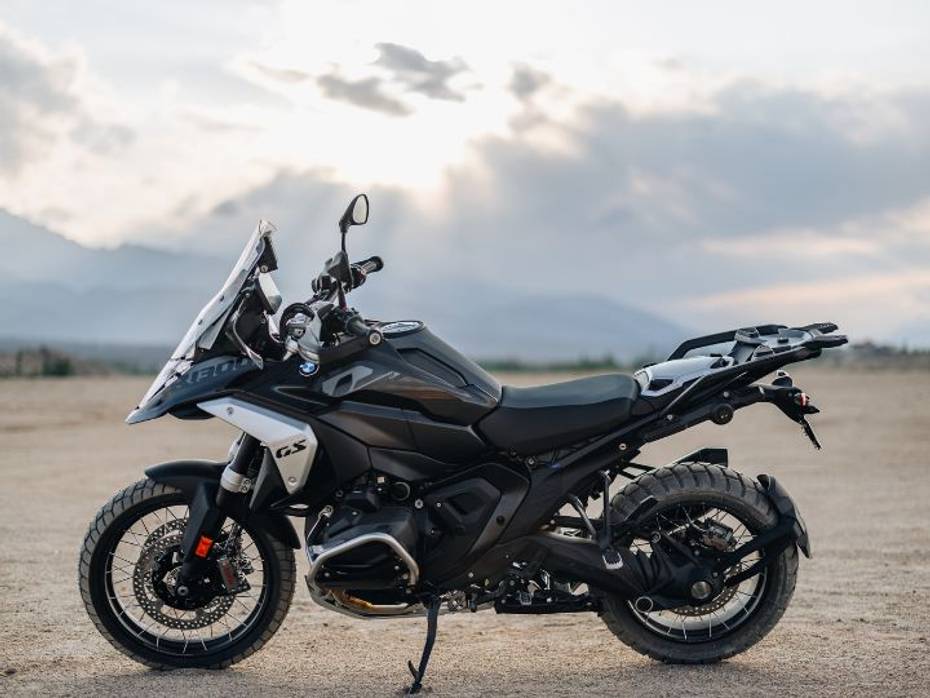
Now one thing I must address about the R 1300 GS is the aerodynamics. You might think aerodynamics wouldn’t matter on a big brute of an adventure bike like this, but you’d be surprised. BMW Motorrad has spent a lot of time sculpting every facet, every panel of this bike to move the air cleanly around the bike and also the rider. In fact, when I was riding at 100+ kph I had my helmet peak set to the higher offroad setting, and whether the electrically adjustable windshield was all the way up or all the way down, there was no buffetting whatsoever. And that means the GS will ensure you don’t have to worry about neck strain when riding for longer journeys at higher speeds.
The R 1300 GS comes packed to the brim with high-tech electronics. Here are the features you get as standard:
TFT display with BMW Motorrad Connectivity: You can pair your phone to the system and you get incoming call alerts and music control.
LED matrix headlight with LED daytime running lights
Dynamic Traction Control: This is an IMU-based system that decides traction control intervention based on the selected mode and orientation of the bike
BMW Motorrad full integral ABS Pro: This new dual-channel ABS is also IMU-based and lean-sensitive.
4 riding modes: Eco, Rain, Road, Enduro
Hill Start Control (HSC): This automatically engages the rear brake when you’re standing on a slope, and disengages it once you start rolling, making hill starts very easy.
Dynamic Brake Control (DBC): This is BMW Motorrad’s version of linked brakes which will engage a bit of the rear brake when using the front, and vice versa, based on the selected riding mode, the amount of available traction and many other factors.
Dynamic Cruise Control (DCC): This is a radar-based cruise control system which will automatically maintain a set distance to the vehicle ahead. It also will slow the bike down when needed, but full emergency braking still needs to be done manually.
Engine drag torque control (MSR): Decides how much engine braking you get when you roll off the throttle.
Tyre pressure control (TPC): Monitors tyre pressures automatically and displays current pressures on the dashboard.
KeylessRide: You get a remote key fob for locking/unlocking the bike, and if you’ve got the optional BMW Motorrad panniers and top box, you can lock/unlock those with the key fob as well.
Heated grips: A must-have if you plan to ride in cold weather, this kept our hands warm when tackling the Himalayas on this R 1300 GS.
Smartphone charging compartment with a USB charging socket: This is a small compartment on top of the fuel tank, that’s rubber-lined to store your phone safely while riding. You get a charging port too, but unfortunately, it’s a USB Type-A, not a Type-C.
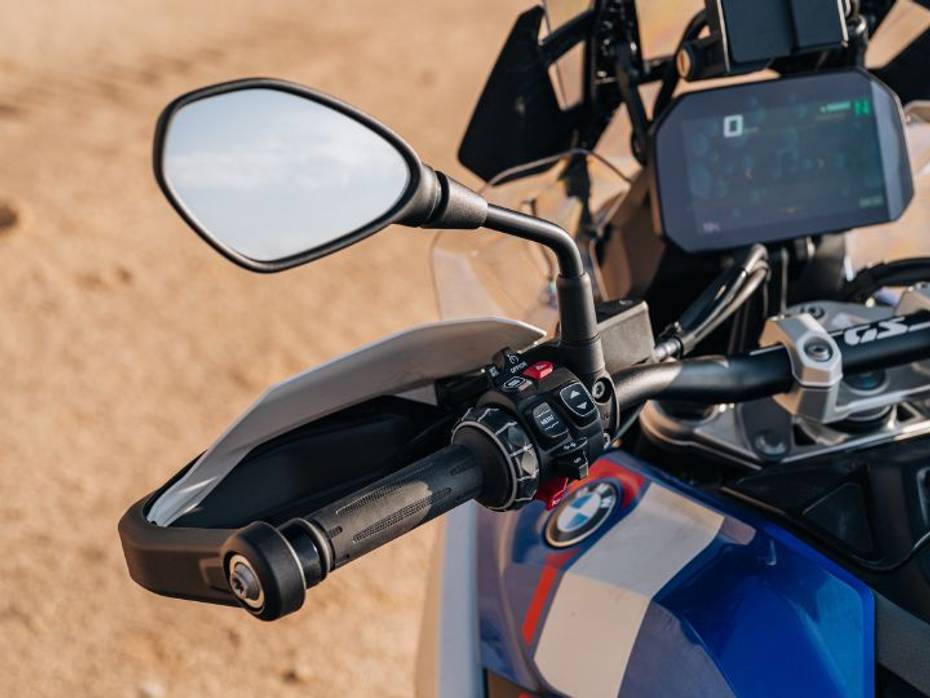
One new addition to this new R 1300 GS is the addition of a ‘Sandwich Button’ on the left handlebar. It lets you quickly adjust four settings - Electric windshield adjust, traction control, heated grips and damping setting, without having to access multiple switches on the controls.
BMW has made a huge number of changes on this new GS - some small, some major. And the end result of all this is a big adventure bike that feels much easier to manage than before. While the introductory price of Rs 20.95 lakh (ex-showroom India) might seem very tempting, it’s important to understand that a lot of the desirable features on this GS are optional, and will cost extra. Depending on the packages and variant chosen, we expect the R 1300 GS might cost you anywhere from Rs 25 lakh to Rs 35 lakh (ex-showroom). Clearly, it’s not a bike for everyone.
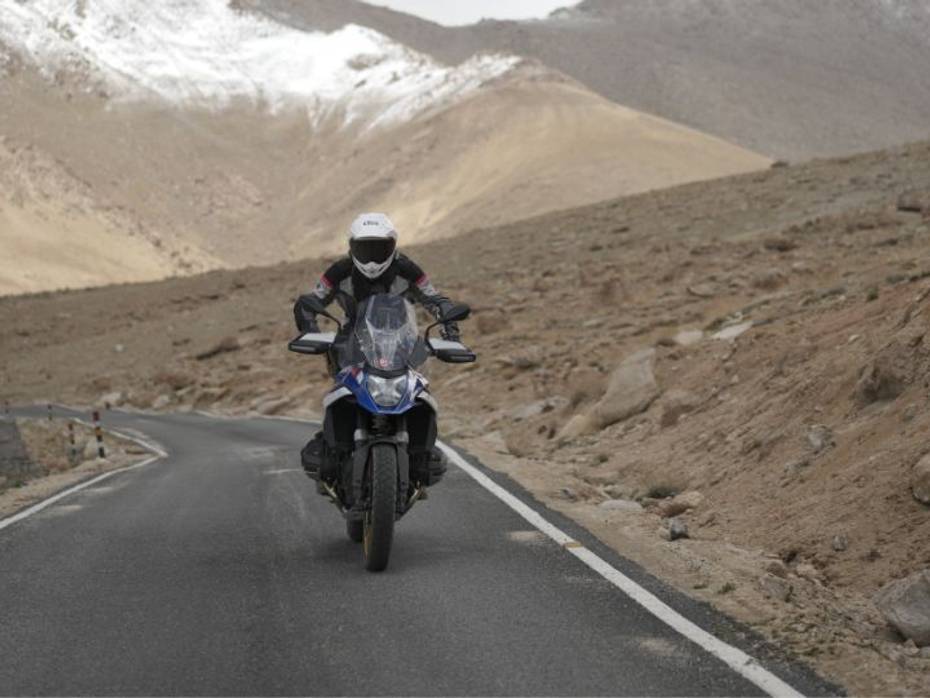
But even if you have the means to get one, you can also get some really capable adventure bikes from quite a few manufacturers these days. But even in the face of stiff competition, the GS still reigns supreme. It might not have the emotional appeal of a certain Italian adventure bike, but the R 1300 GS still manages to speak to your heart, but even more so to your head. If you want a motorcycle to ride around the world with ease, the BMW R 1300 GS is the most logical choice.
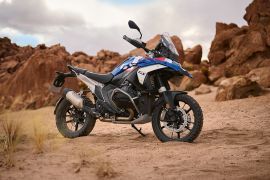
 BMW R 1250 GS
BMW R 1250 GS
 BMW R 1250 GS Adventure
BMW R 1250 GS Adventure
 Harley-Davidson Pan America 1250
Harley-Davidson Pan America 1250
 Triumph Tiger 1200
Triumph Tiger 1200
India's largest automotive community
![BMW S 1000 RR[2022-2024] BMW S 1000 RR[2022-2024]](https://images.zigcdn.com/images/spacer.png) BMW S 1000 RR[2022-2024]
Rs. 20.75 Lakh
BMW S 1000 RR[2022-2024]
Rs. 20.75 Lakh
 BMW G 310 RR
Rs. 3.05 Lakh
BMW G 310 RR
Rs. 3.05 Lakh
 BMW G 310 R
Rs. 2.90 Lakh
BMW G 310 R
Rs. 2.90 Lakh
 BMW G 310 GS
Rs. 3.30 Lakh
BMW G 310 GS
Rs. 3.30 Lakh
 BMW R 1250 GS
Rs. 20.55 Lakh
BMW R 1250 GS
Rs. 20.55 Lakh